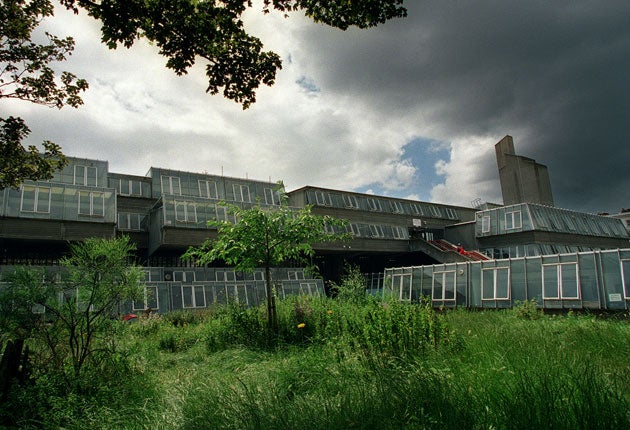Historic schools gain ally against the bulldozers
Plans to flatten architecturally important sites are frustrated as English Heritage steps in to grant them listed-building status

Your support helps us to tell the story
From reproductive rights to climate change to Big Tech, The Independent is on the ground when the story is developing. Whether it's investigating the financials of Elon Musk's pro-Trump PAC or producing our latest documentary, 'The A Word', which shines a light on the American women fighting for reproductive rights, we know how important it is to parse out the facts from the messaging.
At such a critical moment in US history, we need reporters on the ground. Your donation allows us to keep sending journalists to speak to both sides of the story.
The Independent is trusted by Americans across the entire political spectrum. And unlike many other quality news outlets, we choose not to lock Americans out of our reporting and analysis with paywalls. We believe quality journalism should be available to everyone, paid for by those who can afford it.
Your support makes all the difference.Fifteen of the country's most historically valuable schools have been given listed building protection, flying in the face of government plans to demolish large numbers of such schools across Britain.
The unprecedented move by English Heritage comes amid fears among historians and campaigners that the Government's lavish Building Schools for the Future (BSF) initiative, which started in 2005, is heavily biased in favour of bulldozing rather than refurbishment.
Concern is also growing that many of the buildings – once despised because of their size and severity, but now valued for their architecture and their role in broadening education – are being pulled down needlessly to make way for second-rate, costly replacements.
The group of schools given Grade II protection by English Heritage – nine in London and six in Derbyshire – date from the Victorian, Edwardian and interwar periods. They represent some of the best surviving examples of the chalk-and-blackboard bastions that sprang up following the Elementary Education Act of 1870, under which board schools were set up. These were a huge success in raising education standards among the poor.
The buildings were so revered that Arthur Conan Doyle had Sherlock Holmes pay tribute to them. "Look at those big, isolated clumps of buildings rising up above the slates, like brick islands in a lead-coloured sea," the sleuth says to Watson in The Naval Treaty. "The board schools. Light-houses, my boy! Beacons of the future! Capsules with hundreds of bright little seeds in each, out of which will spring the wiser, better England of the future."
But by the 1980s and 1990s, the beacons were winking out, with many having fallen into decay. In the latest phase of BSF, which has already cost billions, the Government last month gave the go-ahead for the fast-tracking of £800m-worth of schools spending across Britain. From 2011, more than 200 schools are due to open each year under BSF.
However, the first analysis of projects completed since the scheme began, published on Friday by Building Design magazine, shows that only 30 per cent have been refurbishments – the remainder were demolitions and new builds.
In 2006, the Commission for Architecture and the Built Environment – the Government's own advisory body – attacked the quality of the new schools. "Too many of the mistakes of the past look like being repeated in the first waves of schools being built under the BSF programme," the commission stated, condemning the overall standard of new schools as "not good enough".
"The environment in which children learn is vitally important," English Heritage's chief executive, Simon Thurley, said. "England has a long and important history of school architecture. We want to ensure that historic schools are protected and enhanced."
Despite grassroots campaigns and objections from architectural experts, many acclaimed and familiar schools have recently been demolished as the BSF scheme spreads. In 2007, Bonner Street Primary School in Bethnal Green, east London – built in the 1870s and hailed as a prime example of its kind – was bulldozed amid outrage from local people and historians. Even modern schools are vanishing. In 2008, Pimlico School – a brutalist mass of glass and concrete, dating from the early 1970s – was pulled down in the face of an outcry from the architectural elite, despite the relatively low cost of repairing and upgrading it. And in Liverpool, which once boasted around 100 board schools, only two dozen now survive, some derelict.
Join our commenting forum
Join thought-provoking conversations, follow other Independent readers and see their replies
Comments